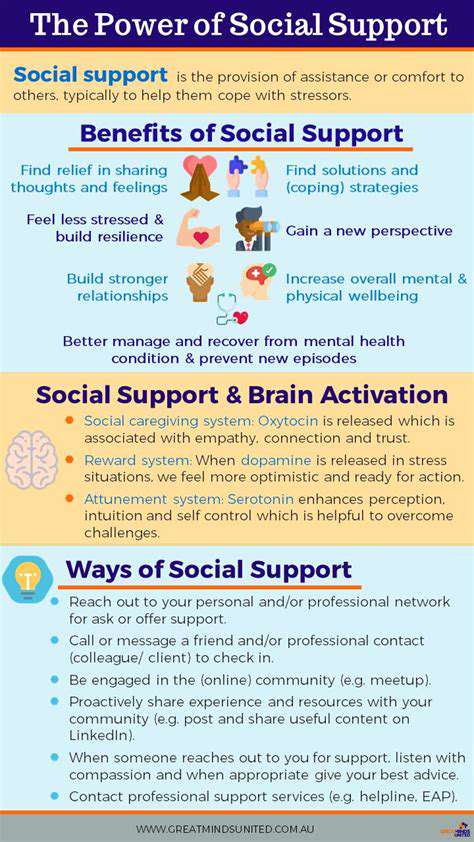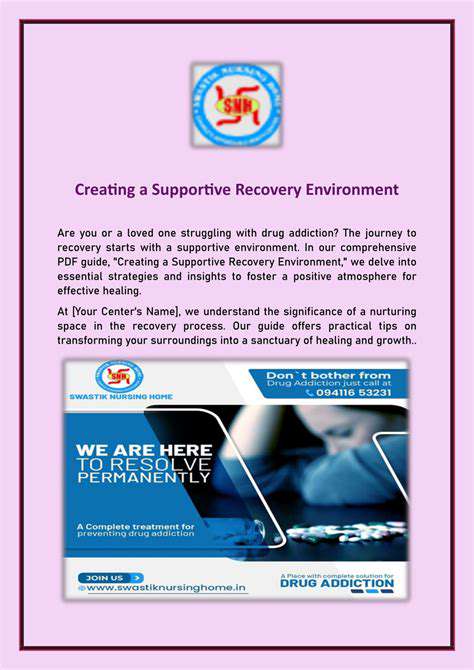Coping with Seasonal Affective Disorder (SAD)

Lifestyle Adjustments to Combat SAD
Understanding the Triggers of SAD
Seasonal Affective Disorder (SAD) is a type of depression that's linked to the changing seasons, typically affecting individuals during the fall and winter months. A key aspect of understanding SAD is recognizing the triggers. Reduced sunlight hours are often cited as a primary cause, impacting the body's natural circadian rhythm and melatonin production. This disruption can lead to feelings of lethargy, sleep disturbances, and a general sense of low mood, which are all common symptoms of SAD. Identifying these triggers is the first step in developing an effective coping strategy.
Beyond reduced sunlight, other factors can contribute to the onset of SAD. Changes in temperature and weather patterns can also play a role, affecting energy levels and motivation. The shorter days can also lead to a decrease in social interaction, and feelings of isolation can exacerbate depressive symptoms. Understanding these various interconnected elements can help individuals develop a more comprehensive approach to managing their SAD.
Dietary and Nutritional Strategies
A healthy diet can be a powerful tool in managing SAD symptoms. Focus on incorporating nutrient-rich foods that support brain health and mood regulation. Foods rich in vitamin D, such as fatty fish and fortified foods, can help compensate for the reduced sunlight exposure. Additionally, incorporating foods rich in omega-3 fatty acids, found in fish oil supplements or certain nuts and seeds, can contribute to improved brain function and reduced inflammation, which can be beneficial for mood regulation. A balanced diet, including fruits, vegetables, and lean proteins, is essential for overall well-being and can help mitigate the effects of SAD.
Hydration is also crucial. Staying well-hydrated can help regulate mood and energy levels. Drinking plenty of water throughout the day can help improve cognitive function and reduce feelings of fatigue. Consider incorporating healthy snacks throughout the day to maintain stable blood sugar levels and prevent energy crashes that can exacerbate SAD symptoms. A well-balanced diet, rich in essential nutrients, can be a significant component in managing the symptoms of SAD.
Light Therapy and Exercise Regimens
Light therapy is a scientifically-backed approach to combating SAD. Exposure to bright light, typically through a light box or lamp, can help regulate the body's natural circadian rhythm and improve mood. Consistency is key, and following a prescribed schedule can be highly effective. Scheduling dedicated time for light therapy, ideally in the morning, can help reset the body's internal clock and promote feelings of alertness and well-being. Light therapy can be a valuable tool in managing the symptoms of SAD, particularly during the darker months.
Regular exercise is another crucial element in managing SAD. Physical activity releases endorphins, which have mood-boosting effects. Even moderate-intensity exercise, such as a brisk walk or a yoga session, can significantly improve mood and reduce feelings of anxiety and depression. Finding an exercise routine that is enjoyable and sustainable is key to long-term success in managing SAD. Incorporating regular physical activity into your daily routine is a vital strategy for combating the symptoms of SAD and promoting overall well-being.
Combining light therapy with regular exercise can produce synergistic effects, leading to even more pronounced improvements in mood and energy levels. Consistent light therapy and exercise, in conjunction with other lifestyle adjustments, can be a powerful approach to effectively managing SAD.

Read more about Coping with Seasonal Affective Disorder (SAD)
Hot Recommendations
- Customized Sleep Schedules: AI Driven for Sustainable Rest
- Crafting a Personalized Productivity Plan for Mental Clarity
- Sustainable Self Compassion: Cultivating Kindness Towards Your Mind
- Sustainable Productivity Hacks for the Busy Professional
- Sustainable Wellness for Parents: Balancing Family and Self Care
- Data Informed Self Care: Designing Your Personalized Wellness Strategy
- Sustainable Wellness for a Purpose Driven Life
- AI Assisted Mindfulness: Personalized Meditations for Deeper Practice
- Building Inclusive Mental Health Services: Key Initiatives
- AI Powered Self Care: Customizing Your Routine for Maximum Impact











